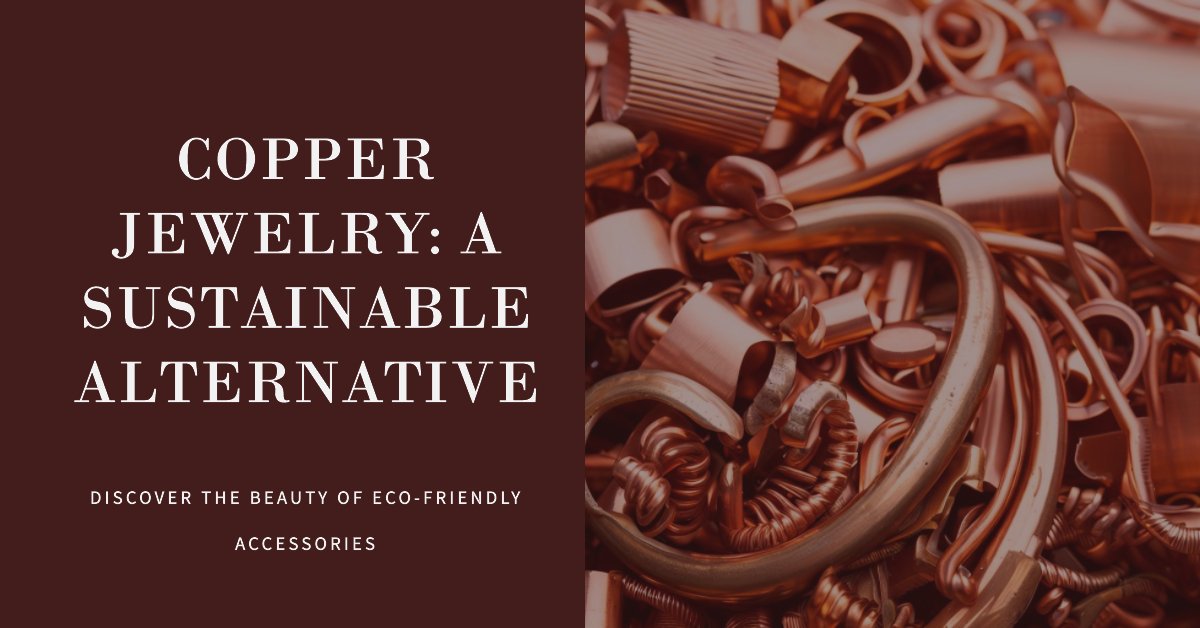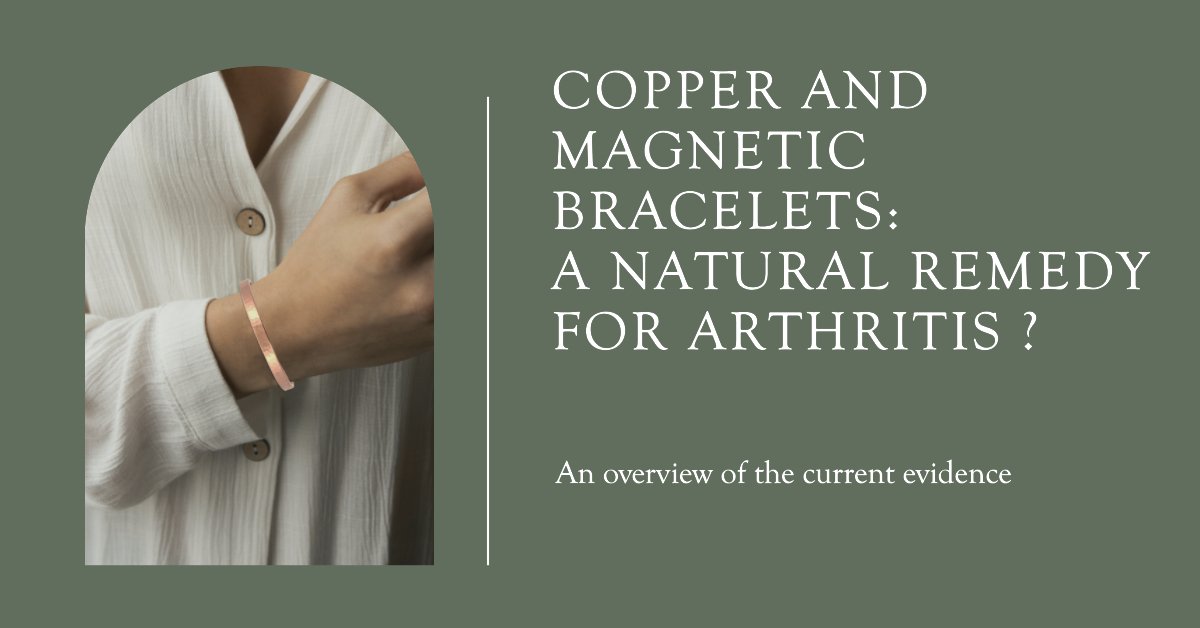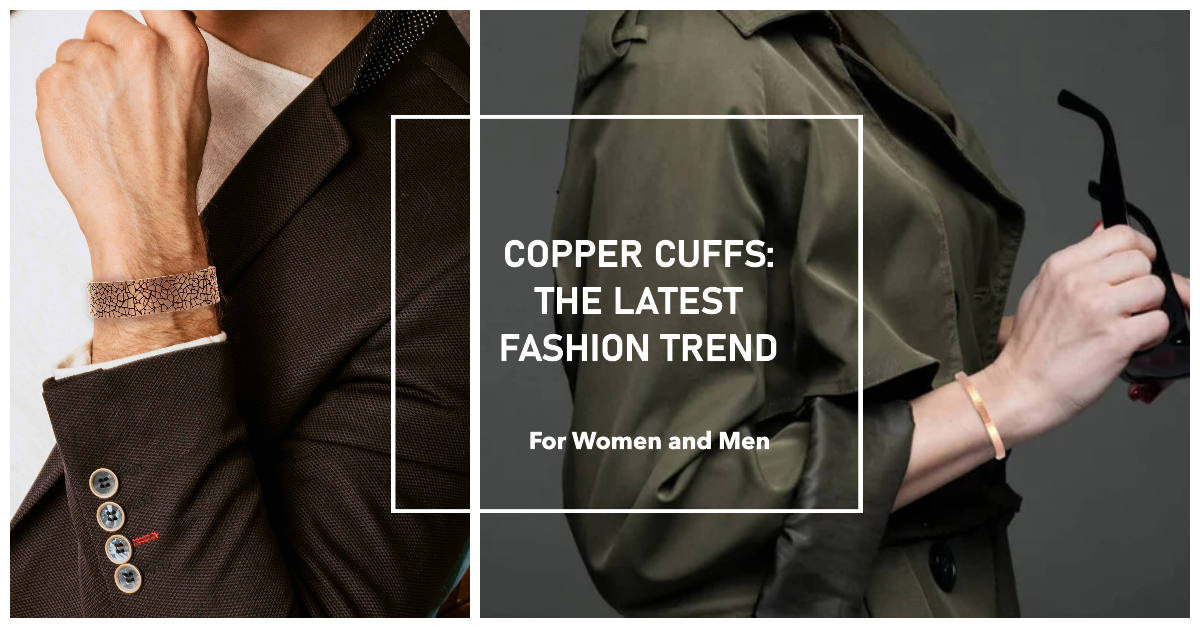Copper Jewelry: A Radiant Path to Environmental Harmony

In the face of escalating environmental concerns, the world is witnessing a profound shift in consciousness towards sustainability. As the specter of climate change, biodiversity loss, and resource depletion looms large, individuals and businesses are becoming increasingly cognizant of their planetary footprint. This urgency for sustainable practices is more pressing than ever, as we endeavor to safeguard our environment for the generations to come.
This rising tide of environmental consciousness permeates various aspects of our lives, including our choices in fashion and accessories. Discerning consumers are now gravitating towards ethically sourced and eco-friendly alternatives to traditional jewelry materials, which often leave a damaging imprint on ecosystems and communities.
Copper Jewelry: A Sustainable Alternative
Copper is emerging as a popular alternative in the jewelry industry, offering remarkable environmental advantages over conventional materials like gold or silver. Copper's unique aesthetic appeal, characterized by its warm reddish hues and versatility in design, is complemented by its alignment with sustainable values, thanks to its minimal ecological footprint throughout its lifecycle.
The creation of copper jewelry entails significantly fewer environmental impacts than the extraction of other precious metals. Traditional mining methods for gold or silver often involve destructive practices such as open-pit mining, leading to habitat destruction and soil erosion.
In contrast, contemporary copper mining techniques have made considerable strides in mitigating these adverse impacts.[: This link will open in a new tab.1: This link will open in a new tab.]: This link will open in a new tab. They incorporate measures that minimize ecosystem disturbance while maximizing resource extraction efficiency. Furthermore, copper is inherently recyclable, capable of being reused indefinitely without losing its original properties.
This unique characteristic makes copper an ideal choice for eco-conscious consumers who prioritize sustainability. By choosing copper jewelry over items made from non-recyclable materials like plastic or acrylics, individuals can significantly reduce waste generation and minimize their carbon footprint.
In the ensuing sections of this article, we will delve deeper into the negative environmental impacts of other jewelry materials and the specific sustainability advantages offered by copper.
By understanding the broader context and recognizing the benefits of choosing copper jewelry, consumers can make informed decisions that not only align with their personal style but also contribute positively to environmental preservation.

The Environmental Impact of Other Jewelry Materials
The Hidden Cost of Precious Metal Mining
The allure of precious metals like gold and silver often obscures the grim environmental consequences associated with their extraction.[2: This link will open in a new tab.]: This link will open in a new tab. These processes, far from being glamorous or sustainable, rely on destructive methods that ravage ecosystems and leave a lasting ecological footprint.
The environmental consequences associated with the extraction of precious metals like gold and silver are indeed grim and destructive. Open-pit mining, a common technique used to reach mineral deposits deep within the Earth's crust, involves clearing vegetation, displacing wildlife habitats, and leaving behind irreparable scars on landscapes [3: This link will open in a new tab.].
Another alarming method used in precious metal mining is cyanide leaching, a chemical-intensive process that involves spraying cyanide solutions onto mounds of crushed ore to extract minute traces of gold or silver. While effective at liberating these valuable elements from their ores, cyanide leaching poses severe risks to both human health and the environment. Accidental spills or leaks can contaminate nearby water sources, endangering aquatic life and compromising entire ecosystems [4: This link will open in a new tab.].
Moreover, the extraction of certain critical resources used in modern technologies, such as lithium for batteries in electric vehicles, causes significant environmental damage. The process of mining lithium results in the destruction and contamination of the natural water system, leading to the loss of unique plants and animals' access to groundwater and watering holes [4: This link will open in a new tab.].
Securing just one ton of rare earth elements, which are essential for modern technologies, produces 2,000 tons of toxic waste. This has devastated large regions of China, where a process of spraying acid over the mining areas is adopted to separate the rare earths from other ores. The mined areas are often abandoned after excavation, rendering them no longer viable for agricultural use [4: This link will open in a new tab.].
The extraction of precious metals and critical resources for modern technologies has a significant environmental cost, leading to habitat destruction, contamination of water sources, and the generation of toxic waste.

The Carbon Footprint of Precious Metals
The carbon footprint of precious metal mining is indeed substantial, with significant contributions to climate change. The machinery required for excavation operations, typically powered by fossil fuels, releases greenhouse gases into the atmosphere [5: This link will open in a new tab.]. Furthermore, refining these metals necessitates high-temperature smelting processes that demand vast amounts of energy derived predominantly from non-renewable sources [6: This link will open in a new tab.].
To put the carbon emissions of gold mining into perspective, the World Gold Council estimates that producing a single ounce of gold emits approximately 0.85 metric tons of carbon dioxide equivalents (CO2e) into the atmosphere for open pit mines and 0.40 tCO2e for underground mines [5: This link will open in a new tab.]. This is equivalent to driving an average car for thousands of miles.
Similarly, silver mining contributes significantly to global CO2 emissions due to the energy-intensive nature of its extraction and refining processes. The carbon footprint associated with these precious metals is undeniably substantial, which demands a reevaluation of their environmental impact.
However, the mining industry is at a tipping point where sustainability and decarbonization are top items on CEOs’ agendas. To achieve a 1.5°C climate-change target by 2050, the mining industry will need to reduce direct CO2 emissions to zero [6: This link will open in a new tab.]. Encouragingly, solutions to decarbonize the majority of emissions will become economic within this decade, addressing both Scope 1 and Scope 2 emissions.
The World Gold Council has provided a path for companies to follow to become net-neutral and meet the objectives of the Paris Agreement. The report highlights the gold sector’s carbon footprint and the steps the industry can take to become net-neutral [7: This link will open in a new tab.]. The use of renewable energy sources like wind and solar power for electricity production and the replacement of diesel-powered vehicles with electric vehicles are among the proposed solutions. These changes could reduce emissions in the gold sector by up to 95% [7: This link will open in a new tab.].
While the carbon footprint of precious metal mining is significant, there are feasible paths towards reducing these emissions and achieving carbon neutrality. The adoption of renewable energy sources and electric vehicles, along with improvements in operational efficiency, can play a crucial role in this transition.
The Synthetic Peril: Plastic in Jewelry Production
The environmental consequences of using synthetic materials like plastic or acrylic in jewelry production are indeed significant. The production of plastic, derived mostly from fossil fuels such as crude oil, leads to a cascade of pollution throughout its lifecycle [8: This link will open in a new tab.].
Air pollution arises during the energy-intensive manufacturing process, releasing harmful greenhouse gases and toxic chemicals into the atmosphere. Furthermore, water pollution occurs due to untreated industrial wastewater that contains plastic particles and chemical additives [9: This link will open in a new tab.].
Moreover, the persistence of plastic waste poses an alarming threat to our environment. Plastics can take hundreds of years—some estimates even suggest up to 1000 years—to decompose naturally. Consequently, discarded plastic jewelry not only contributes to overflowing landfills but also finds its way into ecosystems like rivers and oceans through inadequate waste management practices. Once in these environments, plastics slowly break down into microplastics that contaminate water supplies and endanger marine life [9: This link will open in a new tab.].
By unraveling the dark side of precious metal mining alongside the detrimental impacts of synthetic materials like plastic or acrylic in jewelry production, we are compelled to seek more sustainable alternatives. Copper jewelry emerges as a shining contender due to its numerous environmental benefits. 
The Sustainability of Copper Jewelry
Exploring Copper's Sustainable Nature
Copper, known for its lustrous reddish-brown hue, is not only visually appealing but also considered a sustainable material for jewelry making. Unlike some other metals used in the industry, copper is a naturally occurring element that can be recycled indefinitely without losing its properties.
This means that any copper jewelry you own or purchase can be melted down and reshaped into new pieces without compromising its quality or integrity. This cyclical process significantly reduces the demand for virgin copper extraction, making it an environmentally responsible choice.
Mining with Minimal Ecological Impacts
One of the key aspects that contribute to the sustainability of copper jewelry is the comparatively lower ecological impact of copper mining when compared to other metals like gold or silver. Modern mining techniques have made significant strides in minimizing habitat destruction and pollution associated with copper extraction. With strict regulations in place, companies employ methods such as underground mining and open-pit reclamation to mitigate environmental impacts.
Reducing Habitat Destruction and Pollution
Modern mining practices aim to minimize habitat destruction by carefully planning mineral extraction activities. Rather than resorting to open-pit mining techniques that can result in large-scale disturbances, many mines now prefer underground methods to limit surface disruption.
Additionally, restoration efforts are employed to reclaim land and restore ecosystems once the mining activity ceases. Moreover, pollution prevention measures play a crucial role in safeguarding ecosystems surrounding copper mines[10: This link will open in a new tab.].
Stringent regulations require companies to use environmentally friendly processes for ore processing, reducing the release of harmful substances into nearby water sources and soils. Advanced technologies like sedimentation ponds and water treatment facilities are utilized to mitigate any potential pollutants before they reach sensitive environments.
Copper Deposits: Abundant and Sustainable
Another aspect that enhances the sustainability factor of copper jewelry is the abundance of copper deposits compared to other precious metals [11: This link will open in a new tab.]: This link will open in a new tab.. While gold and silver mining often put immense pressure on ecosystems due to their scarcity, copper deposits are found in more abundant quantities. This abundance reduces the need for extensive exploration and extraction activities, minimizing the overall ecological footprint of copper mining.
By choosing copper jewelry, individuals contribute to reducing the demand for less sustainable materials and help preserve delicate ecosystems affected by excessive mining practices. Copper jewelry stands out as a sustainable choice due to its recyclable nature and lower ecological impacts associated with mining processes.
By embracing modern techniques that minimize habitat destruction and pollution, as well as leveraging the abundance of copper deposits, this beautiful metal offers an environmentally responsible alternative in the world of jewelry making. Making conscious choices in favor of sustainable materials like copper not only reduces our impact on natural resources but also supports a more ecologically balanced future.
Benefits of Copper Recycling in Jewelry Industry
The Advantages of Recycling Copper in Jewelry Production
When it comes to sustainability, one cannot overlook the significant benefits of recycling copper in the jewelry industry. By utilizing recycled copper, jewelers contribute to a greener and more environmentally conscious approach to their craft.
Recycled copper undergoes a rigorous process that involves melting down scrap or used copper items, purifying the metal, and transforming it into new jewelry pieces. This process not only reduces waste but also prevents unnecessary extraction of primary raw materials.
Energy Savings Through Recycling
Recycling copper yields substantial energy savings when compared to primary metal extraction. On average, recycling just one ton of copper saves roughly 50% of the energy required during primary extraction methods. These energy savings have a direct impact on reducing greenhouse gas emissions associated with mining and smelting processes.
In fact, according to recent studies conducted by environmental agencies, recycling copper contributes significantly towards mitigating climate change by cutting down carbon dioxide emissions. Understandably, these statistics might seem abstract without contextualization.
However, consider this: for every ton of recycled copper used in jewelry production instead of extracting new copper from mines, approximately 7 metric tons (or 15,000 pounds) of CO2 emissions are prevented from entering our atmosphere. Such numbers highlight that by choosing jewelry made from recycled copper instead of newly mined materials, we can actively decrease our carbon footprint and work towards a more sustainable future.[: This link will open in a new tab.1: This link will open in a new tab.2: This link will open in a new tab.]: This link will open in a new tab.
Recycling Reduces Demand for New Raw Materials
One cannot overstate the importance of conserving natural resources for a sustainable future. Recycling plays a vital role in reducing demand for new raw materials like virgin ore or refined metals such as newly extracted copper from mines. By opting for jewelry crafted from recycled copper, we lessen the strain on our planet's finite resources.
This approach helps to preserve pristine ecosystems often disrupted by mining activities and reduces the need for destructive extraction methods, such as open-pit mines. More specifically, when we recycle copper, we reduce the demand for new mining ventures and minimize the resulting habitat destruction and water pollution.
We spare countless acres of land that could otherwise be devastated by mining operations. By conserving natural resources through recycling practices, we protect biodiversity by preserving habitats crucial for countless species' survival.
Recycling copper in the jewelry industry is not only a responsible choice but also an effective means of contributing to environmental sustainability. The energy savings achieved through recycling significantly reduce greenhouse gas emissions associated with primary metal extraction.
Additionally, by reducing demand for new raw materials like newly mined copper, recycling helps conserve natural resources and protects fragile ecosystems. As consumers and jewelry enthusiasts alike become more aware of these benefits, choosing jewelry crafted from recycled copper becomes a meaningful step towards a greener future.
Copper: The Versatile and Beautiful Metal
Copper, a reddish-brown metallic element, is not only aesthetically pleasing but also possesses remarkable properties that make it an ideal material for jewelry. Its unique blend of durability, malleability, and conductivity has made it a favorite choice for artisans throughout history.
Copper's versatility allows it to be shaped into intricate designs and combined with other materials like gemstones or enamel. Moreover, copper has been revered for its healing properties in traditional medicine systems across various cultures.
When it comes to sustainability, copper truly shines. First and foremost, copper is one of the few metals that can be recycled without losing any of its inherent qualities.
This means that old or unwanted copper jewelry can be melted down and repurposed
into new pieces without degrading the metal's integrity. In fact, recycling copper consumes significantly less energy than extracting it from primary sources.
Recycling just one ton of copper saves around 15 metric tons of CO2 emissions compared to mining fresh copper ore. In terms of environmental impact, mining for copper has shown to have lower ecological consequences compared to other precious metals like gold or silver.[: This link will open in a new tab.1: This link will open in a new tab.2: This link will open in a new tab.]: This link will open in a new tab.
Modern mining techniques employ strategies such as underground mining and in-situ leaching that minimize habitat destruction and water pollution risks associated with open-pit mining. Furthermore, unlike gold or silver deposits which are relatively scarce, copper deposits are more abundant in nature, reducing the pressure on ecosystems.
Choosing Copper, A Sustainable Pathway Towards Responsible Jewelry
In today's world where environmental concerns are at the forefront of societal consciousness, making conscious choices about the products we consume becomes increasingly important.
Choosing copper jewelry brings together both aesthetic appeal and environmental responsibility. By opting for copper jewelry over materials like gold or plastic/acrylic alternatives, individuals can contribute towards reducing destructive mining practices and pollution associated with other materials.
Additionally, by embracing the recyclability of copper, we can create a circular economy that minimizes resource depletion and carbon emissions. When you wear copper jewelry, not only do you adorn yourself with a beautiful metal but also embody a commitment to sustainability.
So next time you consider adding to your jewelry collection or giving a thoughtful gift to someone special, think about the environmental benefits of choosing copper. With each piece of jewelry, you are making an impactful choice towards a greener and more conscious future.
John Brana
Author
John S Brana, based in San Francisco, is the founder of John S Brana Handmade Jewelry and President of Galleria NuVo, Inc. with over two decades of expertise in crafting distinctive handcrafted pieces. Transitioning from a finance and banking career in 2004, John manages everything from design to marketing. His modern, urban-inspired creations have graced fashion editorials, resonating with stylish, adventurous enthusiasts who value exquisite craftsmanship and luxury. Every piece narrates a distinct tale, mirroring the wearer's individuality.
Also in Copper Jewelry Blog
Copper Bracelet Health Benefits: Do They Really Help With Arthritis?
The Rising Trend of Copper Cuffs: A Fashion Statement for Women and Men
Recent Articles
-
Copper Bracelet Health Benefits: Do They Really Help With Arthritis?
Published date:August 13, 2024
-
Hammered Copper Jewelry: Fall's Must-Have Trend
Published date:July 24, 2024
-
The Rising Trend of Copper Cuffs: A Fashion Statement for Women and Men
Published date:July 14, 2024
-
Benefits of Copper Jewelry: All You Ever Wanted to Know
Published date:June 26, 2024
-
How To Choose The Perfect Men's Best Copper Bracelet For Men According To Your Style
Published date:June 07, 2024
-
Understanding Copper: Your Complete Guide to Women's Copper Earrings
Published date:May 31, 2024
-
Wearing Copper Jewelry with Style
Published date:April 28, 2024
-
Women's Copper Jewelry - John S. Brana Handmade Copper Jewelry
Published date:September 19, 2023
-
Copper Up Your Style: A Guide to Accessorizing Business Casual with Copper Jewelry
Published date:September 06, 2023
-
The Top 8 Best Rated Copper Earrings from John S Brana
Published date:August 30, 2023





